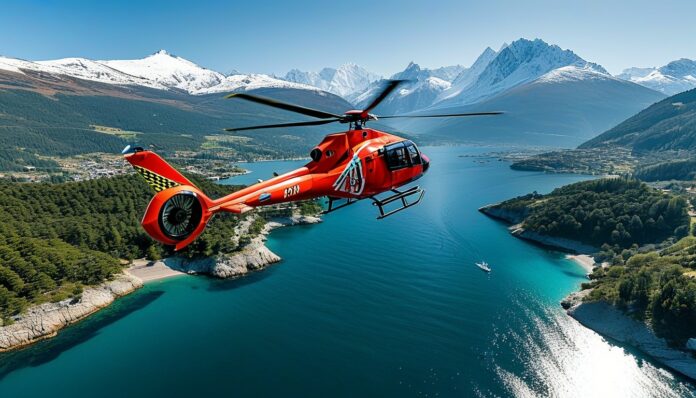From a technical standpoint, helicopters are more complex than airplanes—and it is well known that more complex machinery tends to break down more often. However, when it comes to helicopters, this conventional wisdom fails.
Dry statistics show that helicopters are, on average, safer than airplanes of comparable size and purpose. For example, in North America from 2018 to 2022, fatal airplane crashes occurred at an average rate of 0.88 per 100,000 flight hours. Helicopter accidents happened slightly less frequently, at 0.77 per 100,000 flight hours. The only exception is “big” aviation—jet airliners have a much lower accident rate.
Four Reasons for Helicopter Safety
In the 1920s, the first rotary-wing machines—autogyros, precursors to helicopters—took to the skies. At that time, a spin was a real scourge for aviation—a situation where an airplane loses speed, the control surfaces stop working, and it plummets to the ground.
Autorotation
Autogyros are not susceptible to spins thanks to the phenomenon of autorotation, explains Edward Smith, director of the Pennsylvania Center for the Study of Best Practices in Vertical Flight. When an aircraft with a main rotor begins to descend, the oncoming airflow from below spins the rotor, generating lift. Even with engine failure, an autogyro can land gently, like a parachute, through autorotation.
When helicopters appeared in the mid-20th century, they also had this property.
Technology
Of course, this advantage alone is not enough to make a helicopter a truly reliable machine. Over many years, helicopter manufacturers have had to work hard to create sufficiently reliable components. In general aviation, there are quite strict requirements for the quality of parts and materials, and in helicopter manufacturing, these standards are even higher to compensate for the inherent complexity of these machines.
Training
To understand the third reason, you need to know how rotary-wing aircraft crews are trained. In global flight school practice, it is customary for helicopter pilots to first fly a regular airplane in simpler conditions before mastering the helicopter. In total, training takes longer.
For large helicopters, the crew still includes a flight mechanic, whereas this position has been abolished in jet airliners.
The same goes for ground technicians. Moreover, in helicopter aviation, the practice of including a flight mechanic in the crew is still preserved, whereas airplane operators have long excluded this position from the crew.
Avionics
Finally, there is a fourth reason—avionics, which help the pilot cope with the complexities of control. Many systems mandatory for modern helicopters are not found in small airplanes—for example, topographic radars and laser rangefinders, which help avoid collisions with hills, buildings, and trees. Adaptive control systems compensate for changes in the aircraft’s weight when it takes on heavy loads, gusts of wind, and other dangerous factors.
Why Helicopters Seem More Dangerous
The fact that helicopter safety is more closely monitored has played a cruel joke on them, says Smith.
Due to the high complexity of rotary-wing machines and strict requirements, flying them is significantly more expensive than flying airplanes. Add to this their small capacity—it’s no wonder that helicopter passengers are often high-profile businessmen, politicians, and movie stars. This means that every crash attracts a lot of attention. Take, for example, the recent death of Iranian President Ebrahim Raisi in the crash of a Bell 212 helicopter.
While evolution is making rotary-wing machines increasingly reliable, they still crash from time to time. The main reason is human error, or rather, technical culture. If pilots and mechanics in a particular region of the world take their work seriously, it plays a positive role in safety; if they are careless, it has a negative impact. However, the same can be said for airplanes and cars, can’t it?
